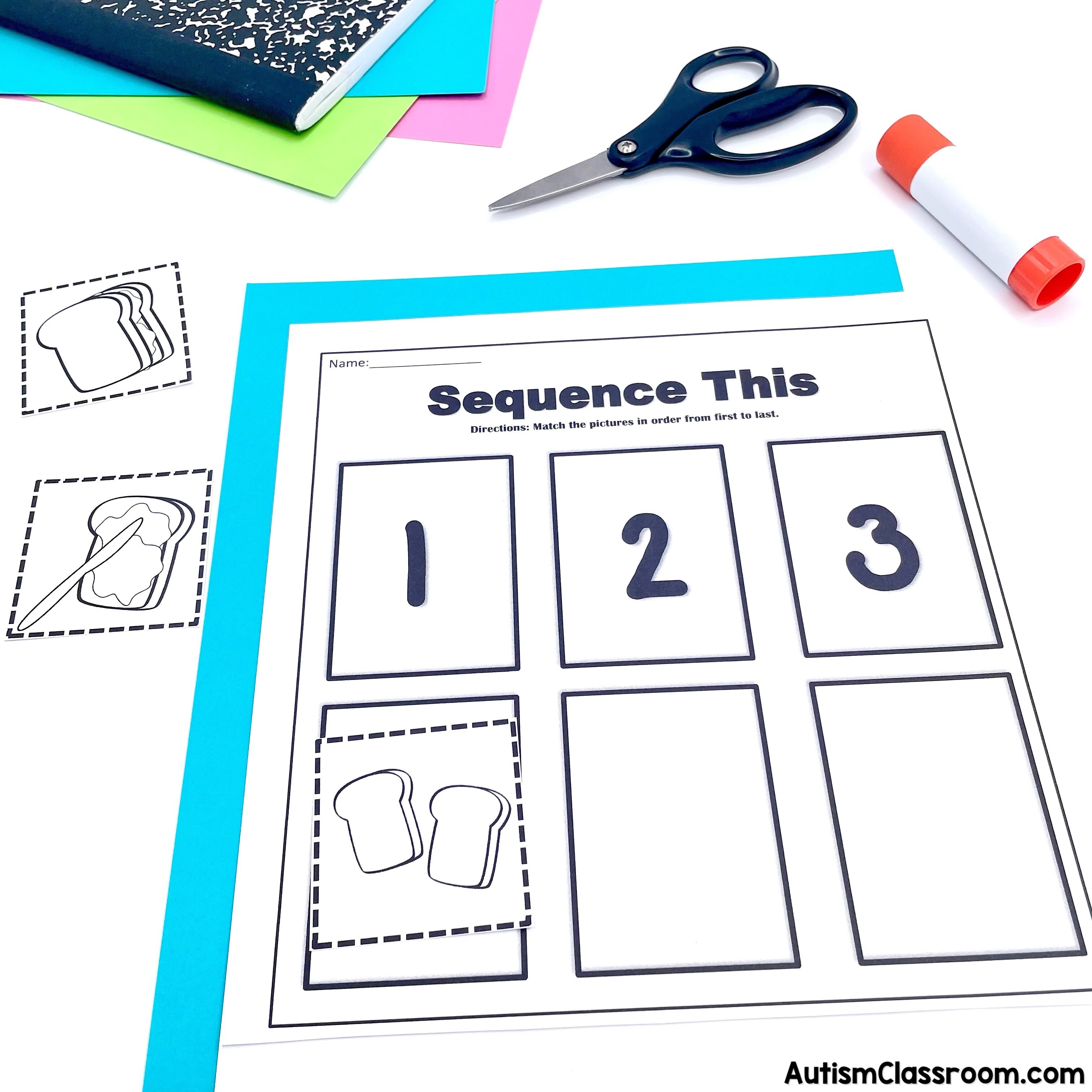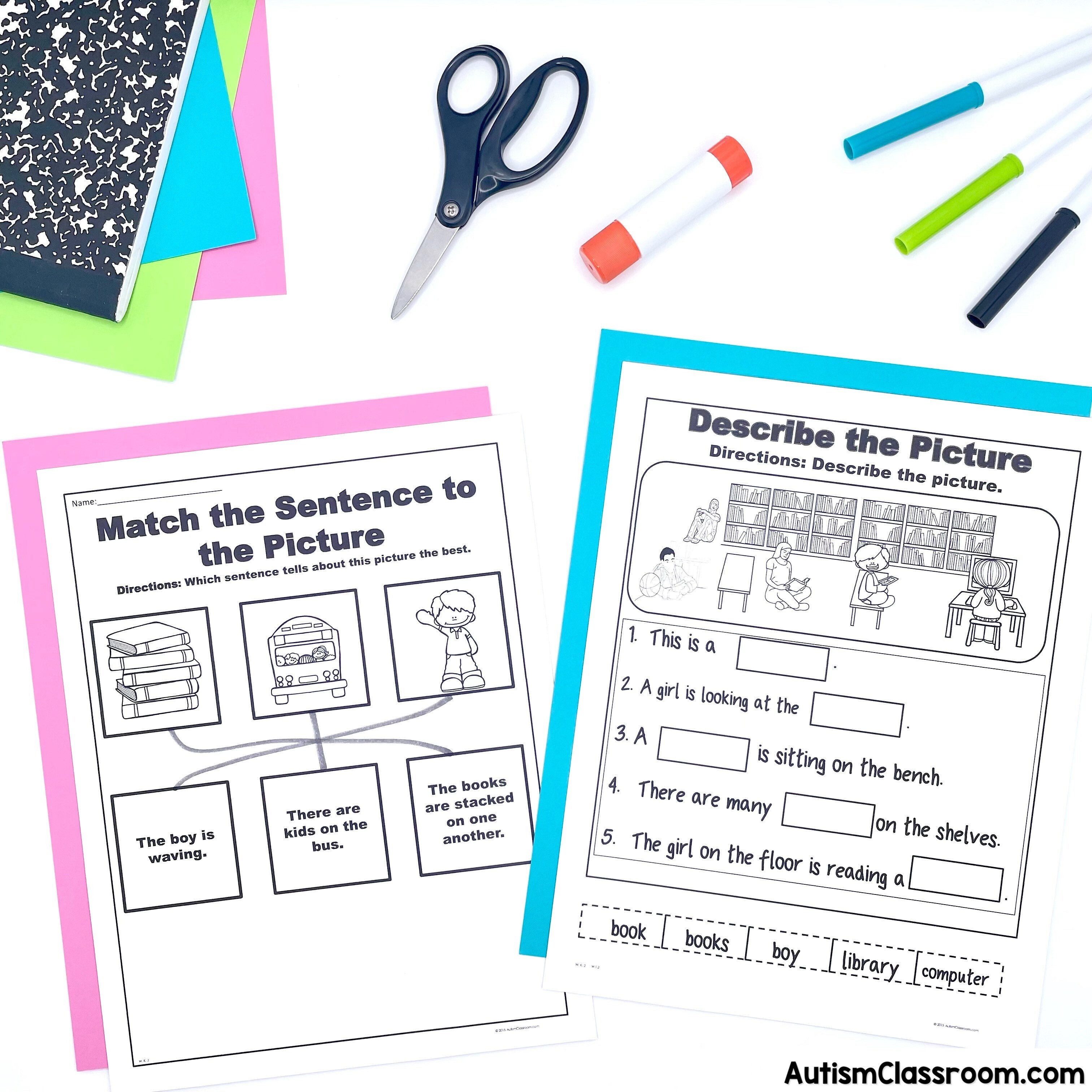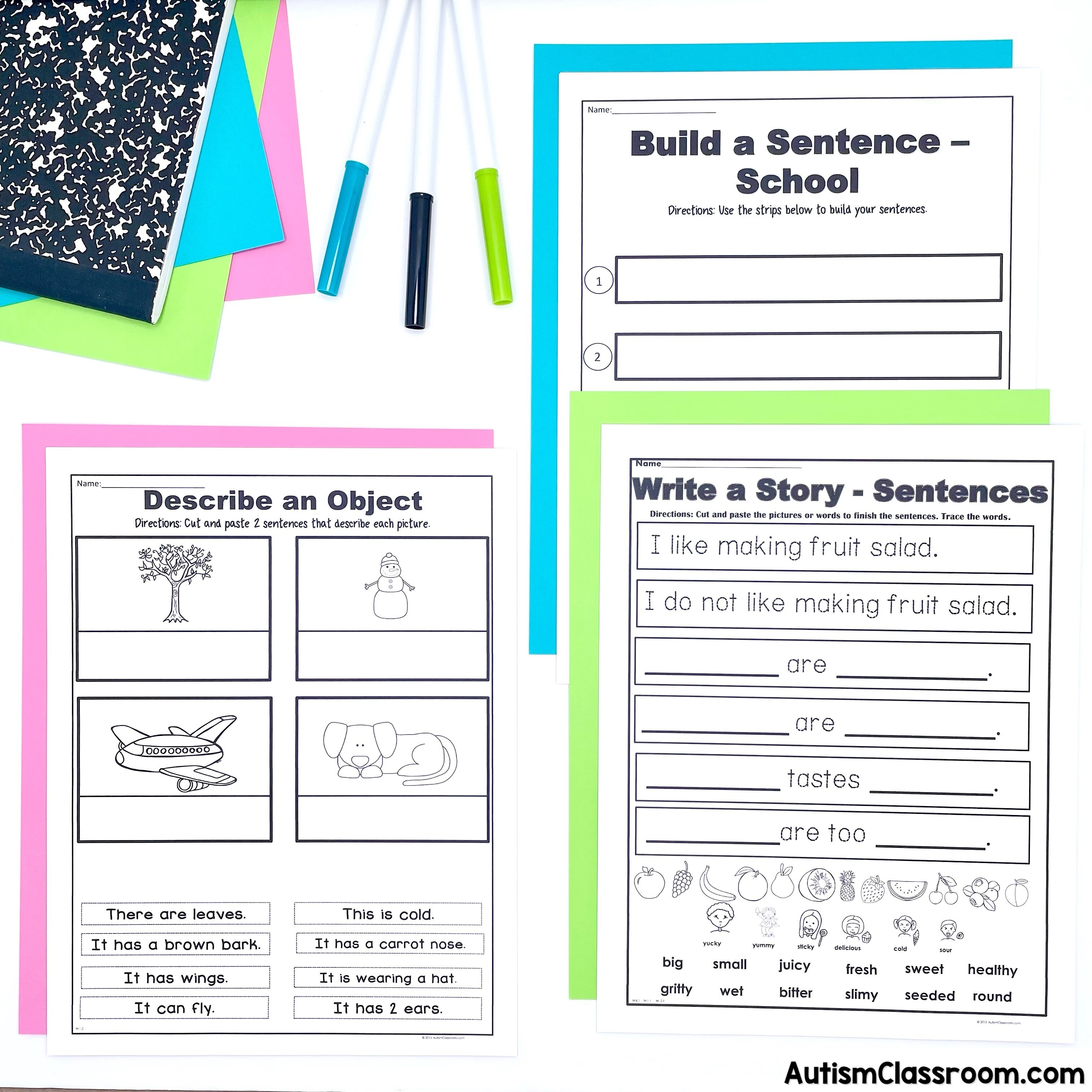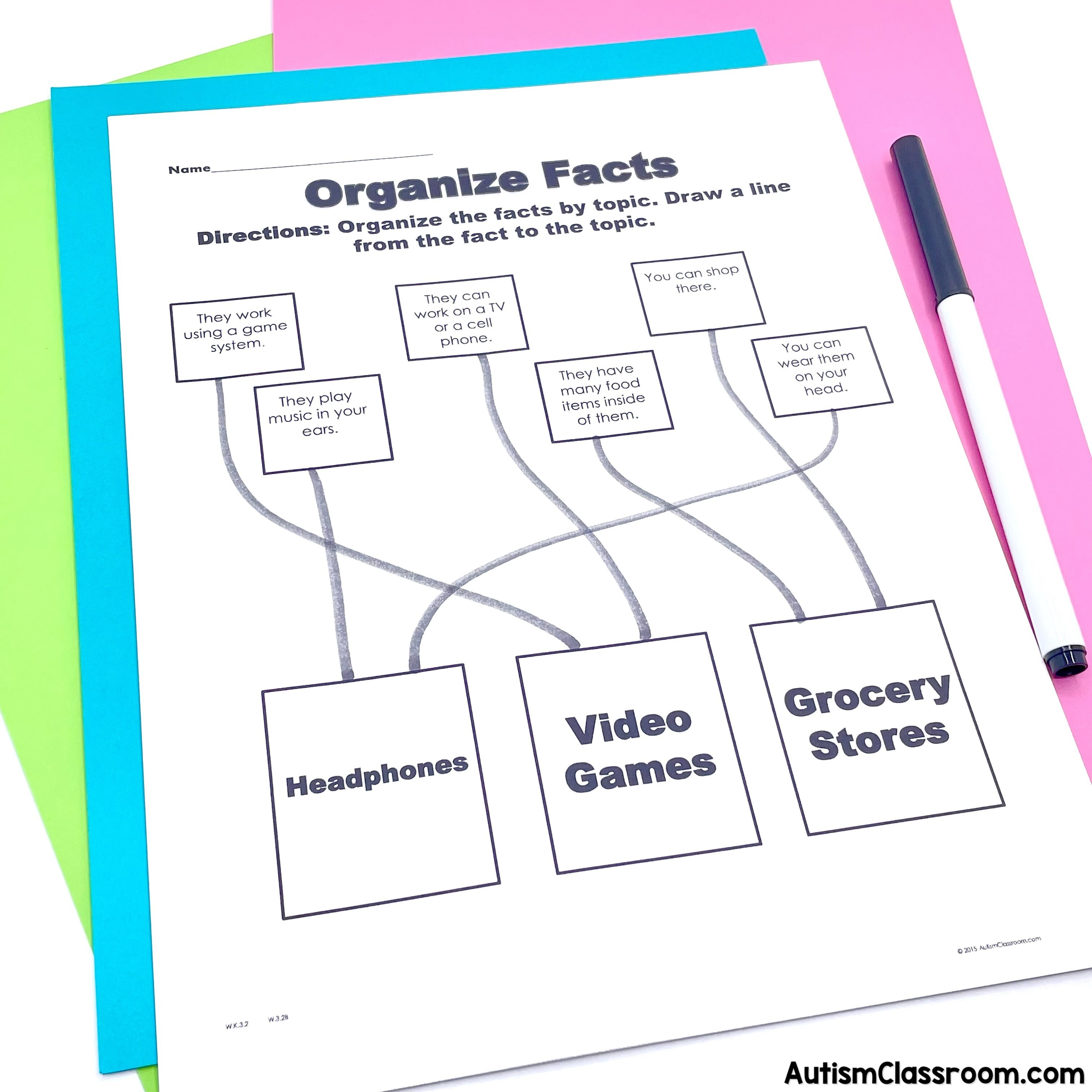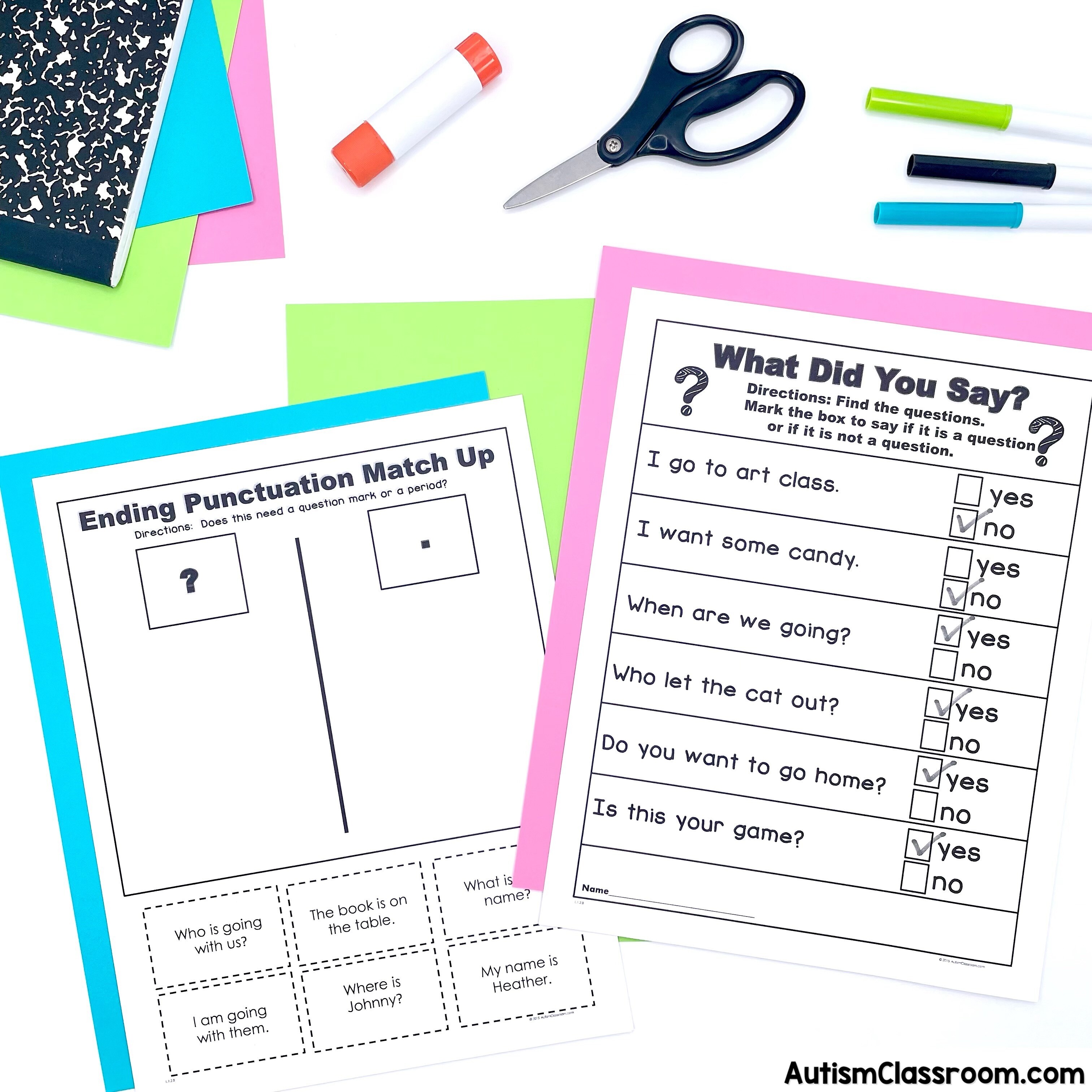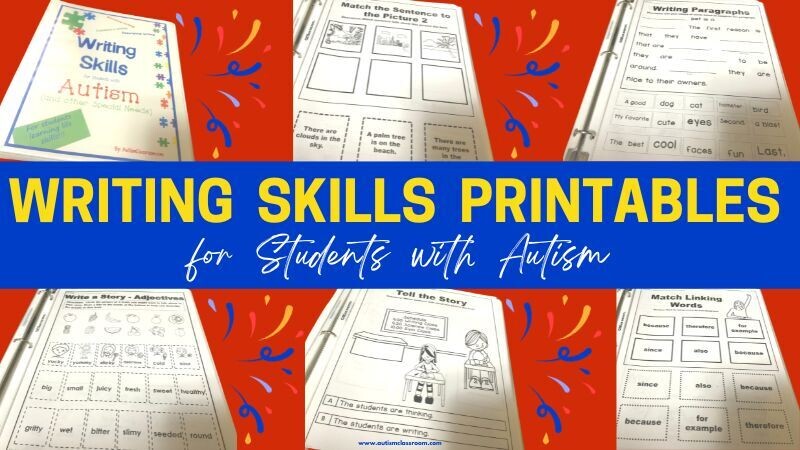 Inside: Writing Skills and Language Arts Skills for Students with Autism
Inside: Writing Skills and Language Arts Skills for Students with Autism
As a teacher, have you ever asked a student to, “try this on your own,” or asked “what do you think of this” and the student looks at you like you're crazy. They are not used to trying work without someone next to them walking them through the entire thing. Things like that could be a small task to you, but it may feel like runnin a marathon to them.
It's similar with writing for expression. Who is thinking about descriptive writing for students with intensive special needs? Are we asking their opinion? Asking for thier version of events? A lot of times we aren’t. But it is important to build this into your classroom programming and here is why.
1. It Includes Students in the Process
- Nonverbal students and students with limited communication skills deserve the same cognitive and academic stimulation as their verbal peers.
- Asking questions encourages them to be active participants in instruction, not passive observers.
- It communicates to them that their thoughts and ideas matter.
- Asking questions provides purposeful opportunities for nonverbal students or students with limited communication skills to use their AAC devices, gestures, or symbols.
- The more communication opportunities provided, the more expressive and receptive communication grows.
Some research shows that students need numerous daily opportunities to communicate across contexts to develop effective language (Beukelman & Mirenda, 2013). Preschoolers alone ask about 100 to 200 questions per day. Giving them many changes to process language and practice language.
2. It Builds Thinking Skills
- Questions encourage critical thinking, making students practice the skill of figuring something out.
- It encourages problem-solving, and conceptual understanding.
- Asking open-ended or “WH” questions promotes higher-order thinking, even if the response is with a sign, a symbol or a gesture.
To create this type of experience, questions like “What do you think will happen next?” can be answered with a visual choice board or pointing.
3. It Raises Expectations
- Asking meaningful questions signals high expectations and lets students know you do have high goals for them.
- When students are challenged appropriately, they often exceed assumptions.
If you have heard the term “presume competence” before, you know that is the belief that all students, regardless of their communication mode, have the ability to think, learn, and express themselves meaningfully.
4. It Increases Engagement and Motivation
- Students are more engaged when they are directly included in learning instead of being passive observers.
- Being asked questions signals, “We want your input,” builds motivation and self-worth.
Picture their eyes when they say, “Are you asking me?” Students light up when their input is sought, even through a smile, eye gaze, or switch.
Ok, we know it is important.
So how do we implement this?
Ways to Promote Descriptive Writing Without Handwriting
1. Use Assistive Technology (AT)
Students can select words or phrases to describe a picture or experience using touch screens or switches. This helps because it reduces motor demands and allows students to focus on content and expression.
2. Utilize with Sensory Experiences
Give students real, hands-on experiences they can describe. Explore a bin of sensory materials and then describe it. Use visuals for sensory words (e.g., soft, rough, cold, loud). This builds concrete vocabulary tied to real-world experiences. It can be made expressive by asking students if they like or dislike the item they are seeing or touching.
3. Worksheets
Our writing printables offer work on the skill of expressive writing, narrative writing and writing related to information text. Descriptive writing can be difficult for many students because it requires them to visualize and express details in words. This process demands a good grasp of language, creativity, and the ability to translate sensory experiences into descriptive text.
For students with autism, this task is even more challenging due to difficulties with language processing, abstract thinking, and fine motor skills.
The Writing Printables for Students with Autism are printables (you can also get this as a workbook here) great for students in self-contained classrooms whose special needs include developmental delays or it may work for younger students in primary grades learning to develop expressive writing skills.
The goal is to teach expressive writing skills without worrying about handwriting.
Because of this, the resource includes writing related worksheets that require variations in response styles for many answers. (Ex. matching, cutting and pasting to produce written products.)
The skills are Common Core Aligned and there are over 70 pages.
Links to Common Core State Standards include W.K.1, W.K.2., W.K.3, W.K.8, W.1.1, W.1.2., W.1.3, , W.2.1, W.2.2., W.2.3, W.2.8,W.3.2B, and L.1.2.B
Here is what is inside of the Writing Printables for Students with Autism.
DESCRIPTIVE WRITING -
Finishing a Sentence
Describe an Object
Match
Describe the Picture
Describe the Picture 2
Descriptions
Pictures and Text Responses
Build a Sentence
Build a Sentence –School
What I like…
Why I think…
Finish the Sentence
Finish the Sentence Blank
Facts vs. Opinions
Opinions with Lining Words
Opinions with Supporting Evidence
Opinions with Supporting Evidence (Page 2)
Writing a Letter
Writing a Letter – Field Trip
NARRATIVE WRITING -
Tell About the Picture
What Does This Mean
Tell the Story
Match The Sentence to the Story
Match the Sentence to the Picture
Match the Sentence to the Picture 2
Match the Sentence to the Image
Topic Sentences
Opinion Piece
Opinion Piece - Animals
Opinion Piece – Book Report
Writing Paragraphs
Writing Paragraphs 2
Match Linking Words
Brainstorming – Planning a Meal
Make a Story- Topic
Make a Story- Adjectives
Make a Story- Sentences
Make a Story-Closing
Make a Story- Paragraph
Tell About This
Describe & Color
What Did You Do This Weekend?
Tell About a Trip to the Zoo
INFORMATIONAL & EXPLANATORY WRITING -
Sequence This
What Order?
Copy the Order
Making a Grocery List
Graphic Organizer for Facts
Organize Facts
How to Make a Cake
Put in Order
Order of Events
How to Use a Tablet
Write a Paragraph-Main Idea and Details
Write a Paragraph- Blank
Advertisement
Invitation
A “Travel Guide” Through My School
Newsletter
Home Journal
Matching Facts to Statements
Illustrations and Captions
Research Paper For Beginning Writers
PUNCTUATION -
Punctuation Match
Punctuation Match 2
What Did you Say?
Word Work- Period
Symbol Work- Question Mark
Symbol Work- Exclamation Point
Ending Punctuation
Punctuation Word Match
Punctuation Match Up
These worksheets offer space to address the skill with easy to complete activities.
4. Use Visual Choice Boards
To encourage communication from students, boards or screens with images and words related to sensory details like sight, sound, feel, smell, taste could help with expression. Students can select visuals to create descriptive sentences like “The toy is red.”
5. Sentence Frames + Word Banks
Try using common sentence starters so that students can get used to the structure. They can add their own answers to the ending.
- “I see a ____.”
- “It feels ____.”
- “It smells like ____.”
To make it more concrete, use pictures alongside words in the word bank to help them make their selection. You will be rockin’ and rollin’ if you can support their sentence structure and vocabulary expansion in this way.
6. Celebrate Expression in All Forms
To help students express themselves, accept writing through:
- Picture selection
- Verbal dictation
- Symbol-supported sentences
- Digital output
This approach honors communication diversity. It may also help build motivation in students if they see that you accept how they communicate.
When we give students with intensive special needs the tools and space to express themselves, especially through descriptive and narrative means, we are giving them a voice. It may not come easily at first, but just like any student learning something new, they can grow when given the chance. By intentionally building expressive writing into your classroom, you create an interesting lesson where something different happens. It will be fascinating to watch their opinions and choices bloom.
Writing Skills for Students with Autism | Writing Prompts for Special Education

